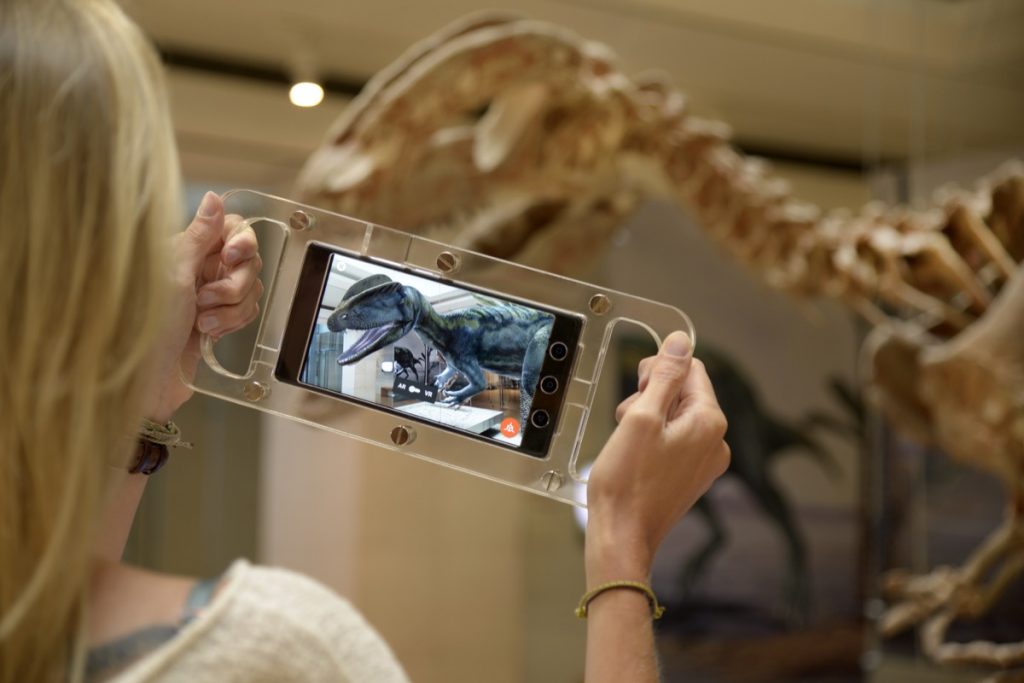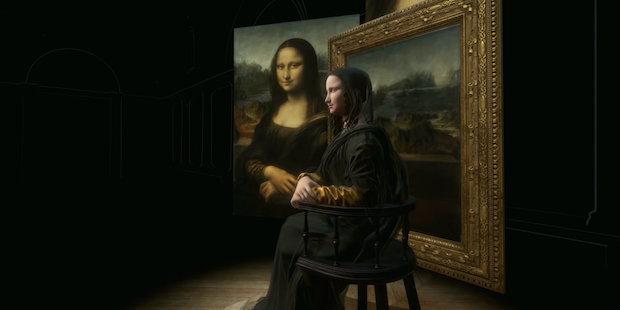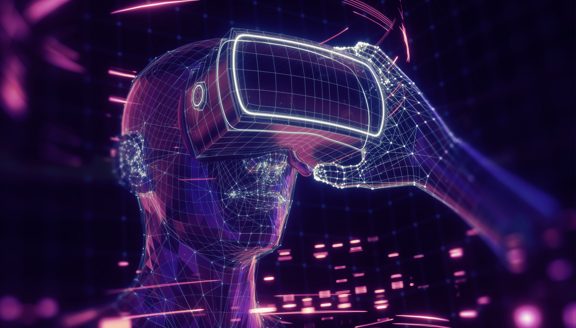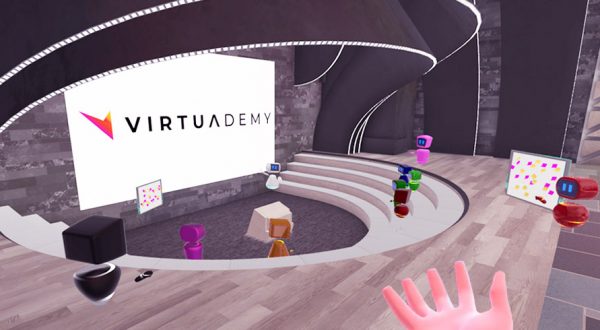Imagine being able to admire a beautiful Renaissance painting, a statue from the time of Pericles, or a vase from the era of Genghis Khan and being able to listen to the artist himself narrate his work. Today, thanks to AR and VR, approaching art becomes a 360-degree experience that engages art lovers and non-enthusiasts alike. Immersive technologies, which kept cultural tourism alive during the lockdown, have now become mainstream and are destined to revolutionize cultural experiences definitively. They enhance the displayed artifacts through the power of emotions and pave the way for new visitors.
First immersive experiences in cultural heritage
For many of us, one of the first augmented reality experiences during an exhibition was probably at Expo Milano 2015, “Feeding the Planet, Energy for Life!” in Milan.
Through dedicated tablets or downloaded apps on our devices, we found ourselves wandering through the pavilions as if we were visiting the referenced country, rather than simply walking around an exhibition box. Among the augmented reality experiences, the Chile pavilion allowed us to step into the shoes of Chilean fishermen and try to maintain balance in their small and unstable boats. In the Austria pavilion, we could encounter various animal and plant species from Austrian forests.
Since that day, we have increasingly found ourselves in virtual places.
A few years later, in 2018, the GO!Muse app was introduced at the Museum of Science in Trento (MUSE), offering visitors an augmented reality walk through various thematic paths. The app allows us to admire exhibited prehistoric fossils and see how they looked when alive, their movements, and the environment they lived in, all reconstructed in 3D. It also provides in-depth information through text or image-based descriptions. MUSE has thus brought interactivity closer to the contemporary concept of science centers compared to traditional scientific museums.
Today, the number of cases and examples has multiplied, especially during the lockdown, all around the world.

The spread of immersive experiences for cultural heritage
In 2016, a space-time window in Turin offered visitors to the Museum of Oriental Art (MAO) the opportunity to explore the Forbidden City in virtual reality. This was made possible through a project by the Turin Museums Foundation and LD Multimedia. Using Oculus Rift, visitors could find themselves transported to the heart of Beijing in a 360-degree experience.
In 2017, the Tate Modern in London created a virtual exhibition where visitors could fully immerse themselves in Modigliani’s Parisian studio. After careful research, the museum created an accurate reconstruction of the artist’s final studio as it would have appeared 100 years ago. Hilary Knight, Head of Digital Content at the Tate, believes that virtual reality “is a way to convey feelings, helping people to feel a connection with the artist. It’s a different way of absorbing this information and perceiving the artist.”
In 2018, the National Museum of Finland in Helsinki opened a new virtual reality exhibition. Visitors can travel back in time to the year 1863 and explore R. W. Ekman’s painting “The Opening of the Diet 1863 by Alexander II.” The VR headset allows people to feel as if they are stepping into the painting. Visitors find themselves inside the scene and can observe the Hall of Mirrors from a 3D perspective. They can even interact and converse with the Russian emperor and other characters depicted in the painting. This is part of an exhibition that provides a detailed description of Finland’s life and politics in the 1860s during the influence of the Russian Empire.

In 2019, the Louvre Museum in Paris launched “Mona Lisa: Beyond the Glass,” a virtual reality experience that explores Renaissance painting as part of its blockbuster exhibition on Leonardo da Vinci. Through interactive design, sound, and animated images, users discover details about the painting: from the texture of the wooden panel to how time has changed its appearance.
Since April 2021, the Circus Maximus in Rome can be visited in all its historical stages through virtual and augmented reality. Visitors can stroll through Roman shops and witness a chariot race with cheering crowds and overturned chariots, in a continuous reference between the present and the past. The visit is accessible with immersive headsets and stereophonic earphone systems. The VR visit is also accessible to deaf individuals thanks to simplified subtitles in Italian or English.
Immersive technologies in cultural context: models
The advantages of using VR and AR in the cultural context, particularly for museums, are evident:
- offering interactive experiences that generate greater engagement and therefore memorability;
- possibility of providing additional content beyond the artwork and traditional captions;
- engagement based on gaming techniques and therefore greater appeal to younger audiences;
- possibility of reaching audiences who are distant from the physical location of the museum.
By combining these advantages, two different models have emerged in the field of immersive experiences in cultural heritage.
#01 Until a few months ago, the main goal of immersive technologies was to entertain their audience differently.
#02 Today, instead, AR and VR applications are also used as an alternative to “physical” visits. The pandemic has accelerated the development of these applications, seeking to “bring” the audience into museums without asking them to leave their couch at home. In this way, technology is proposed as an “enabler” tool: making a tourist visit possible, despite restrictions. But also as an element of innovation and completion of the traditional experience.
For this reason, we believe that in the future, physical and digital, even in the cultural heritage sector, will increasingly converge and interact within hybrid experiences.
The challenges of art in the time of Coronavirus
During the Covid-19 emergency, the Ministry for Cultural Heritage and Activities and Tourism collected virtual initiatives organized by state cultural institutions, the world of entertainment, music, and audiovisuals. This gave rise to the platform “Culture Never Stops,” divided into six sections – Museums, Books, Cinema, Music, Education, and Theater – which offers a rich selection of videos, web content, and social initiatives that can be enjoyed from home.
Many museums continue to share their collections online through virtual tours and anecdotes about artworks and artists.
With VR, we can imagine creating new, innovative sections of exhibitions and museums. A very current example is VOMA: the first completely virtual museum. Designed to make art available from home, the museum brings together collections from some of the world’s most prestigious museums. From the Hermitage in St. Petersburg to the Metropolitan Museum of Art in New York, from the Musée d’Orsay in Paris to the Prado Museum in Madrid.
Research conducted by the Digital Innovation Observatory in Cultural Heritage and Activities of the School of Management at Politecnico di Milano during the conference “Extended Experience: the challenge for the cultural ecosystem” has highlighted several pieces of evidence of how the digital presence of museums has changed. The pandemic has had a significant impact on the cultural ecosystem, presenting it with new challenges but also new opportunities in response to the changing needs of users. Today, 95% of museums have a website (+10% compared to 2020), and 83% have an official social media account. The type of experience offered has also changed. 80% of museums have provided at least one digital content, opening up the opportunity to rethink the relationship with the user as an extended experience, potentially continuous and accessible from anywhere and at any time.
VR and AR apps developed by AnotheReality for tourism and cultural heritage
Augmented reality is now a widespread tool for enhancing exhibited objects with additional content. This was done, for example, in the case of We AR Art, a mobile app created to enhance Italian monuments and artworks, allowing users to have a unique infotainment experience. On one hand, the user is entertained and amused by 3D animation, while on the other hand, they are informed about the concept behind the creation of the artwork. For example, this was done with the famous sculpture L.O.V.E by Maurizio Cattelan, known as “The Finger.” It was rendered in 3D and made accessible via the app, simply by using a smartphone.
With augmented reality, we can also envision a new generation of brochures and catalogs, as demonstrated by the project “Nuvole a Motore.” This is an environmental education project aimed at raising awareness about the relationship between energy, climate, and meteorology. Through a pedagogical approach and the use of augmented reality, topics related to sustainability, climate change, and the use of alternative energy sources are addressed.
Educational materials for any initiative can be extended with new multimedia content.
Another example is the project “Sas Alas A Bolare,” created in collaboration with Alkemy Lab and the Region of Sardinia. It is an engaging journey that combines a romantic adventure with interactive gaming dynamics, guiding both real and virtual visitors in the discovery of the city of Cagliari.


